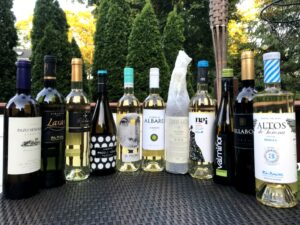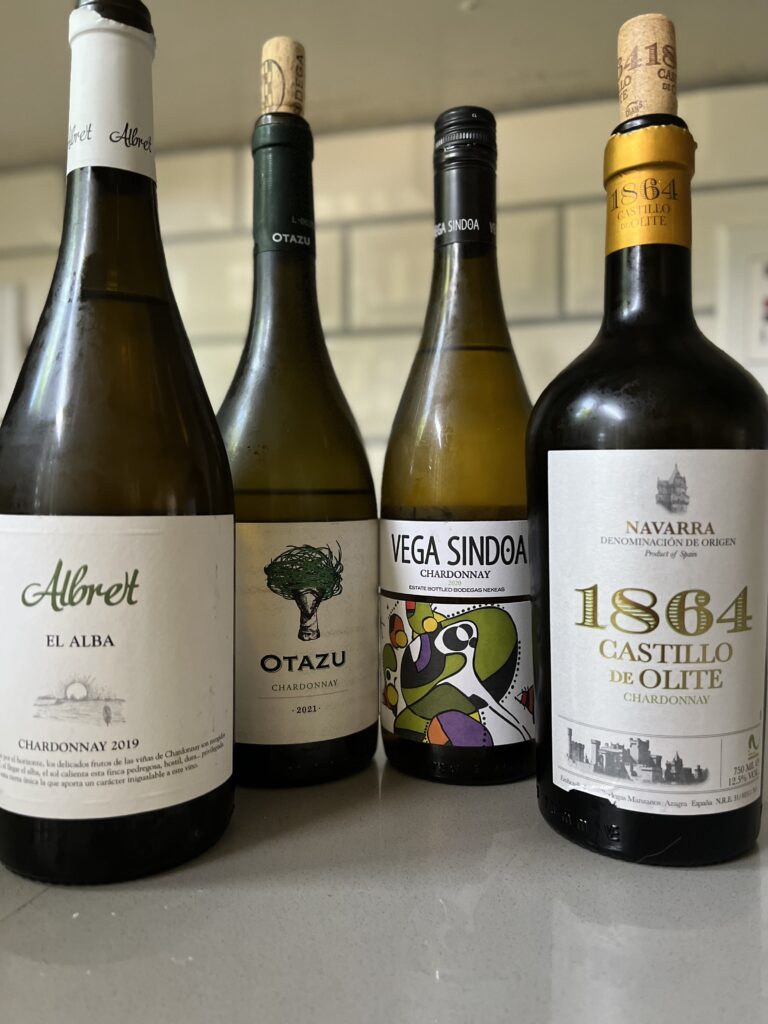Knowledge is an Addiction
They say knowledge is power, but I think of it as an addiction. The more you know, the more you want to know. This craving is demonstrated so well in the world of wine and I love it. No matter how much you know, there is still so much to learn. Albariño is an exceptional example of this concept for me. With its bracing acidity, Jancis Robinson calls it “razor-sharp,” it has quickly become one of my favorite grape varieties and I never heard of it prior to two years ago.
Since then, I have become an Albariño zealot. This is demonstrated in my multiple posts about Rias Baixas and the variety itself. I was first introduced to Albariño through #Winestudio in April of 2016. My first post proclaimed how my palate is truly a New World one. Once I began research, I was intrigued. I mean come on..
an entire DO was created in 1980 specifically for the Albariño grape varietyClick To Tweet This must be one heck of a grape!! But once I tasted, that was it… I was hooked.Research: It’s a Tough Job, Yeah, I Know
As I explored a little bit more, I began to question how I didn’t hear about Rias Baixas or Albariño prior. I discovered that Rias Baixas in located in the Galicia region of northern Spain and that it shares the same mineral-rich soils and cool climate as the Loire Valley, New Zealand and the Rhine. Once I found out that Galicia is also known as Green Spain and that it has more than 2,200 hours of sunshine per year. The more I learned, the more I wanted to explore the region and the grape.
Albariño is considered by many to be Spain’s premier quality white wine. The thick skin is one of the reasons it tends to have intense aromas. The wines are typically medium bodied, sweet-smelling, high in acidity with aromas of almonds, apples, citrus, lime, peaches, and grass. It’s chemical makeup are similar to Gewürztraminer, Muscat, and Riesling.
Live Tasting Albariño
In May, I had the privilege of tasting eleven different expressions of Albariño alongside other wine writers on a virtual tasting with the online wine community of Snooth. Once again, I had the opportunity to gain more knowledge about the region and the grape.
- They say that the Galician estuaries, are the finger marks that God left when, after creating the world, he placed his hand there to rest.
- Albarino is believed to have come from Rias Baixas.
- Jenny McCLoud, a Virginia winemaker, was responsible for getting Albariño approved by the TTB
- The expression of Albariño changes as the temperature goes from cooler to warmer -> citrus to stone fruit to tropical fruit
- Wind is a major issue in Rias Baixas

Highlights of the wines we tasted:
(MSRP: $20) Contado on Teo river… warm region; Ferment in stainless vats at very low temperature; One of hte oldest estates. One of the few that are 100% estate fruit.
(MSRP: $15) Located in the Salna valley; Granitic soil; Vines older than 20 years. Granite posts – grapes hang above. To keep off lower areas where moisture is; 1st spanish white wine to win a gold medal in 1991 – highest recognition; Fermented with wild yeast.
Altos de Torona O Rosal Albariño
(MSRP: $20) Interesting bottle – square shouldered; Very contemporary; Label is very technical; The winery is halfway up the slope of the Minho river- so not affected by mosture of cold weather; Drier weather, but still a bit cool to get the high acidity.
(MSRP: $24) 70% Albarino. 20 % Luoaro Stainless steel fermented with vineyard yeasts carrying out the fermentation. Located in one of the warmer subregions which runs along the Portugal border.
Viñas Adegas Galegas D. Pedro de Soutomaior Albariño
(MSRP $19) Self portrait on label; Condata region; Don Pedro was a great patriot and hero. It honors his memory; from warmest area in Rias Baixas; avg. temp is 60 degrees. But this area can get up to 100.
Señorío de Rubiós Robaliño Albariño
(MSRP: $18) 2017 a collective of 105 partners working together to bring together traditional and modern techniques; Warmest area; they also produce a sparkling
(MSRP: $22) Market savvy label; Group of independent wine growers (coop) over 400 members; 500 acres of vineyards; Salnus valley Northern part; A little sandier soil, so good drainage.
(MRSP: $18); Located on Minho river (vinho verde on other side of river) use terrace vineyards; Where river joins ocean; Coolest and wettest; one of the first wineries in Rias Baixas; Part of founding in 1986
(MSRP: $19) Celtic roots; wild yeast. One of the relative new comers with its beginnings starting in 1997. Located in the sub-region of O’ Rosal. Valmiñor collaborates with over 200 growers throughout the D.O. Rías Baixas.
(MSRP: $25) Salnus Valley; 2016 named 35 on top 100 for 2017; Good distribution; 5 months on the lees, a little of skin contact before pressing.
Adegas Terra de Asorei NAI Albariño
(MSRP: $16) Baldasarous – 172 acres of vineyards; Nai- was a poetic tribute. This is a tribute to women. The respect for the family in Galicia.
~Slainte!
If you would like to try a range of Albariño for yourself, head over to Snooth’s website, where you can purchase an Albariño Taste Pack that features regional wines at great prices.

It was a fun tasting of many great wines. I agree, knowledge (for some) is an addiction – it is for me too.
It was fun but very fast paced!! I love learning new things – it keeps life exciting!
This was a fun tasting that included some new (to me) wines and some old favorites. Whenever springtime rolls around, I automatically think of Albariño!
I’m right there with you.. Spring makes me think Albarino!
Your first two sentences say it all (as I sit here taking a break from studying Italian wine I too love Albariño and think a visit to Rias Baixas would be fabulous. Recently had an Albariño from the Oregon producer Abacela. One to try if you have the chance.
I too love Albariño and think a visit to Rias Baixas would be fabulous. Recently had an Albariño from the Oregon producer Abacela. One to try if you have the chance.
Good luck with your studies. Everyone I know who has studied Italian wines say it is the most difficult! I will keep an eye out for Abacela! Thanks for hosting the tasting and for reading!